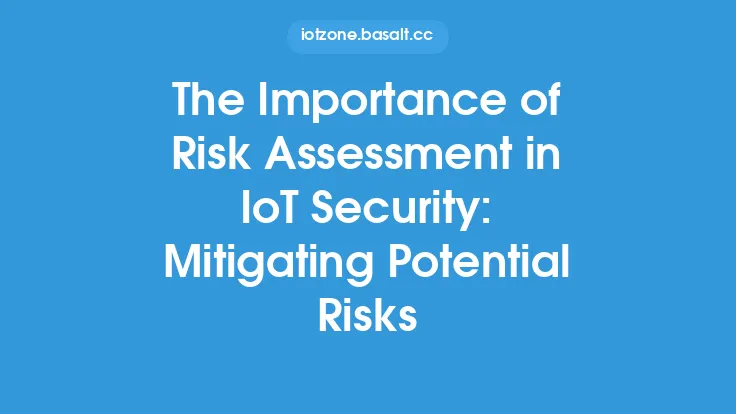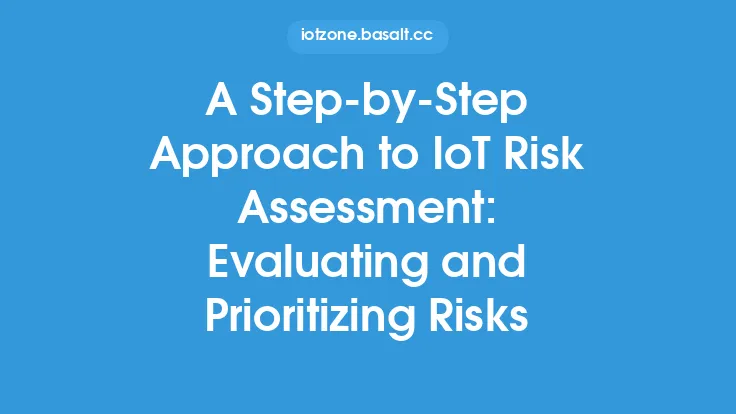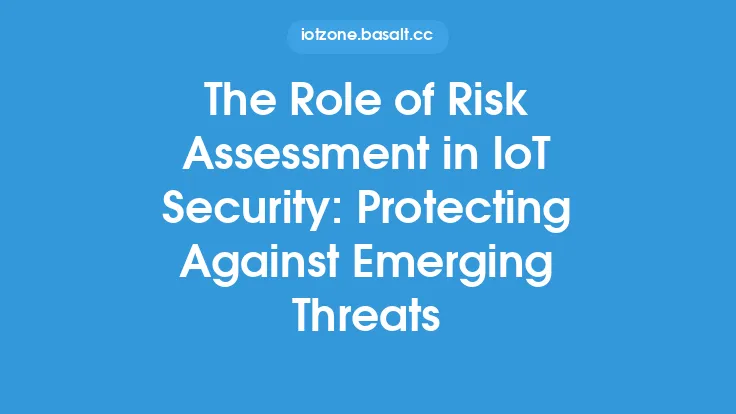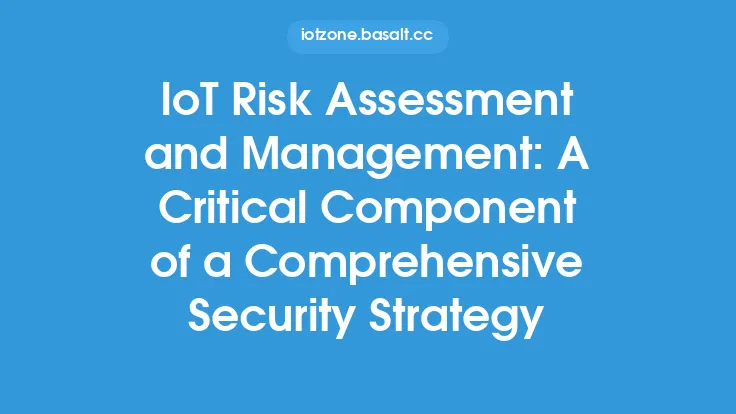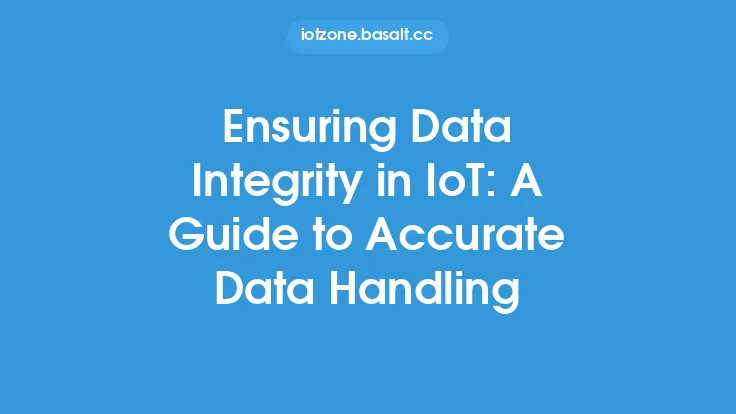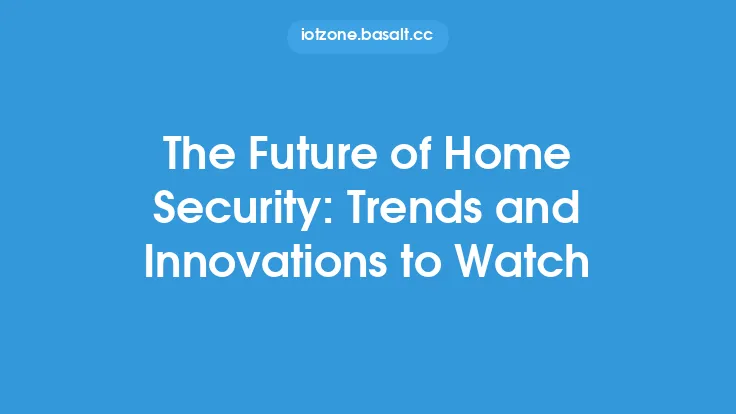The increasing number of connected devices in the Internet of Things (IoT) has created a vast attack surface, making it essential to conduct thorough risk assessments to ensure the security and integrity of these devices. IoT risk assessment is a critical process that helps identify potential vulnerabilities, threats, and risks associated with connected devices, allowing organizations to take proactive measures to mitigate them. In this article, we will delve into the world of IoT risk assessment, exploring its importance, key components, and best practices for ensuring the security and integrity of connected devices.
Introduction to IoT Risk Assessment
IoT risk assessment is a systematic process that evaluates the potential risks and threats associated with connected devices, networks, and systems. It involves identifying, analyzing, and prioritizing potential risks, as well as developing strategies to mitigate or manage them. The goal of IoT risk assessment is to ensure that connected devices and systems are designed and implemented with security in mind, reducing the risk of data breaches, cyber attacks, and other security threats. By conducting regular risk assessments, organizations can identify vulnerabilities and take proactive measures to address them, reducing the risk of security incidents and protecting sensitive data.
Key Components of IoT Risk Assessment
A comprehensive IoT risk assessment involves several key components, including:
- Asset identification: Identifying all connected devices, networks, and systems that are part of the IoT ecosystem.
- Threat identification: Identifying potential threats and vulnerabilities associated with each asset, including hardware, software, and network vulnerabilities.
- Risk analysis: Analyzing the likelihood and potential impact of each identified threat, using techniques such as threat modeling and risk scoring.
- Risk prioritization: Prioritizing identified risks based on their likelihood and potential impact, allowing organizations to focus on the most critical risks first.
- Risk mitigation: Developing and implementing strategies to mitigate or manage identified risks, such as implementing security controls, patching vulnerabilities, and conducting regular security audits.
Best Practices for IoT Risk Assessment
To ensure the effectiveness of IoT risk assessments, organizations should follow best practices, including:
- Conduct regular risk assessments: Regular risk assessments help identify new vulnerabilities and threats, ensuring that organizations stay ahead of emerging threats.
- Use a risk-based approach: Focus on the most critical risks first, prioritizing risks based on their likelihood and potential impact.
- Involve multiple stakeholders: Involve stakeholders from various departments, including IT, security, and operations, to ensure a comprehensive understanding of the IoT ecosystem.
- Use automated tools: Leverage automated tools, such as vulnerability scanners and threat intelligence platforms, to streamline the risk assessment process and improve accuracy.
- Continuously monitor and update: Continuously monitor the IoT ecosystem and update risk assessments to reflect changes in the threat landscape and new vulnerabilities.
Technical Considerations for IoT Risk Assessment
When conducting IoT risk assessments, organizations should consider several technical factors, including:
- Device security: Evaluate the security features of connected devices, including encryption, authentication, and access control.
- Network security: Assess the security of networks and communication protocols used by connected devices, including Wi-Fi, Bluetooth, and cellular networks.
- Data security: Evaluate the security of data transmitted and stored by connected devices, including data encryption and access control.
- Firmware and software updates: Assess the ability to update firmware and software on connected devices, ensuring that vulnerabilities can be patched quickly.
- Secure communication protocols: Evaluate the use of secure communication protocols, such as TLS and DTLS, to protect data in transit.
Common IoT Risk Assessment Challenges
Organizations may face several challenges when conducting IoT risk assessments, including:
- Complexity: IoT ecosystems can be complex, making it difficult to identify and assess all connected devices and systems.
- Limited resources: Small and medium-sized organizations may lack the resources and expertise to conduct comprehensive risk assessments.
- Evolving threat landscape: The IoT threat landscape is constantly evolving, making it challenging to stay ahead of emerging threats.
- Limited visibility: Organizations may lack visibility into the security posture of connected devices and systems, making it difficult to assess risks.
- Regulatory compliance: Organizations must comply with various regulations and standards, such as GDPR and HIPAA, which can add complexity to the risk assessment process.
Conclusion
IoT risk assessment is a critical process that helps organizations ensure the security and integrity of connected devices and systems. By following best practices, considering technical factors, and addressing common challenges, organizations can conduct effective risk assessments and mitigate potential risks. As the IoT continues to grow and evolve, it is essential to prioritize risk assessment and management, ensuring that connected devices and systems are designed and implemented with security in mind. By doing so, organizations can protect sensitive data, prevent security incidents, and maintain the trust of their customers and stakeholders.
